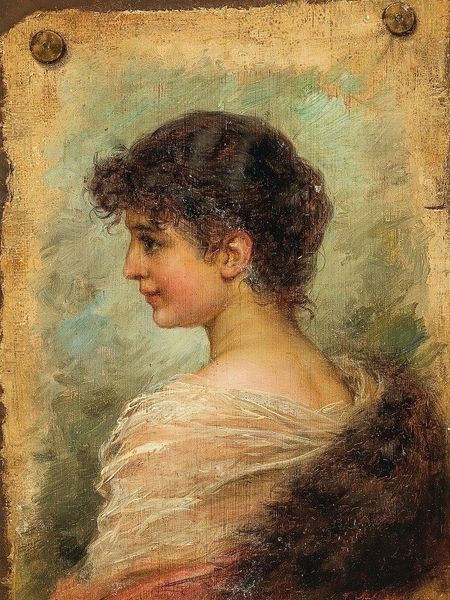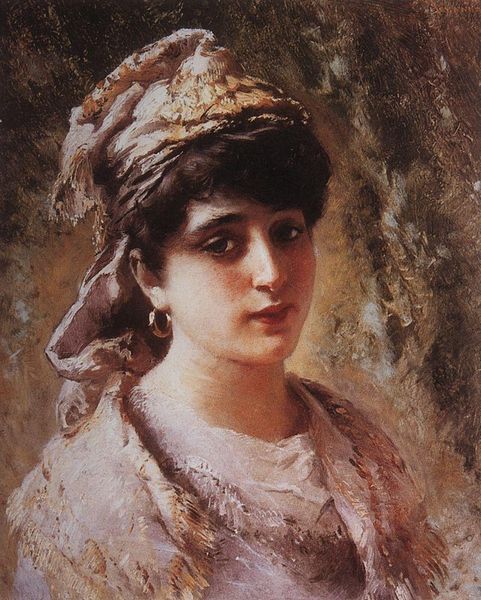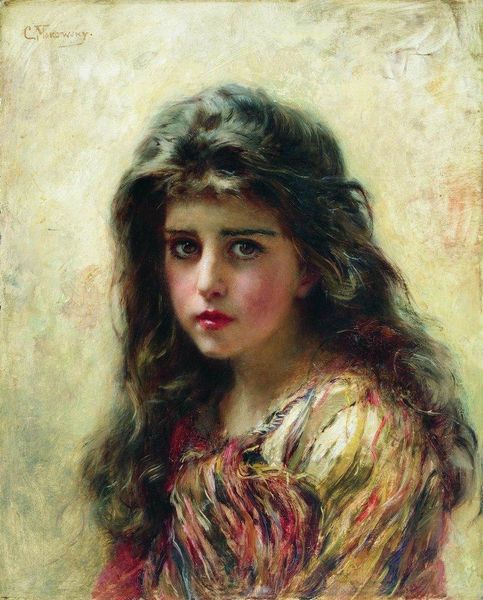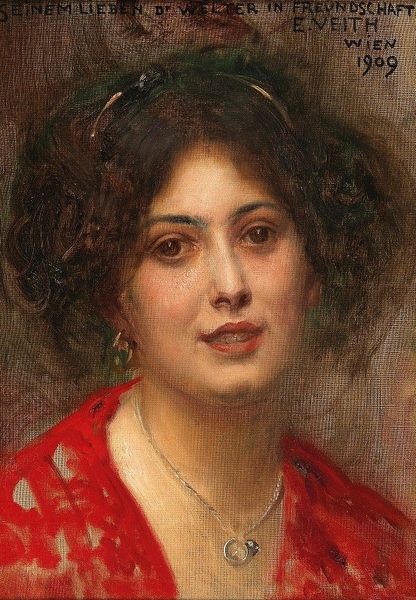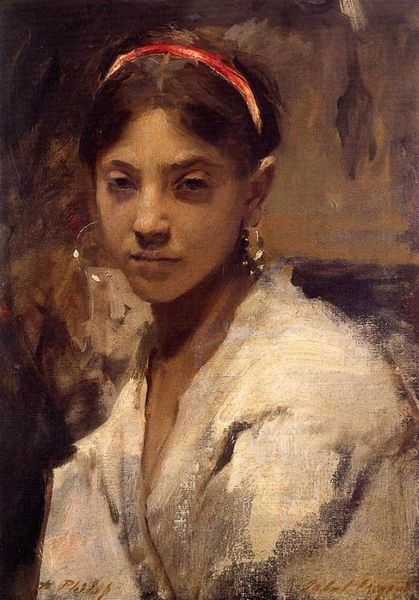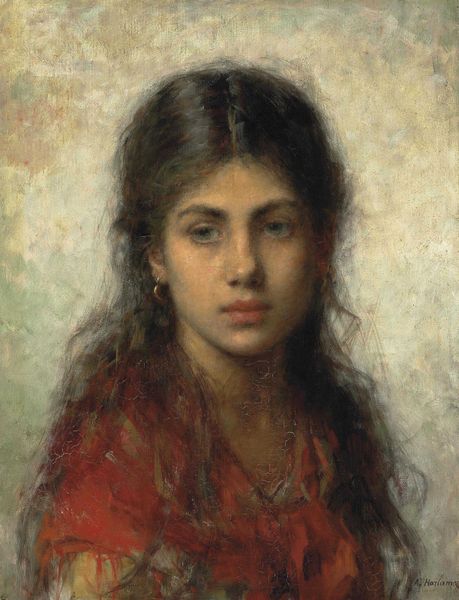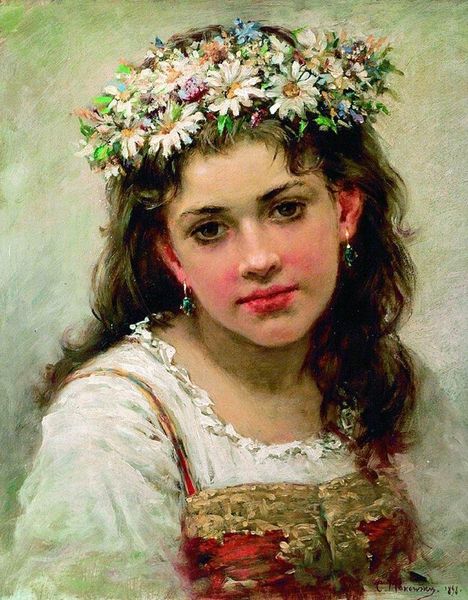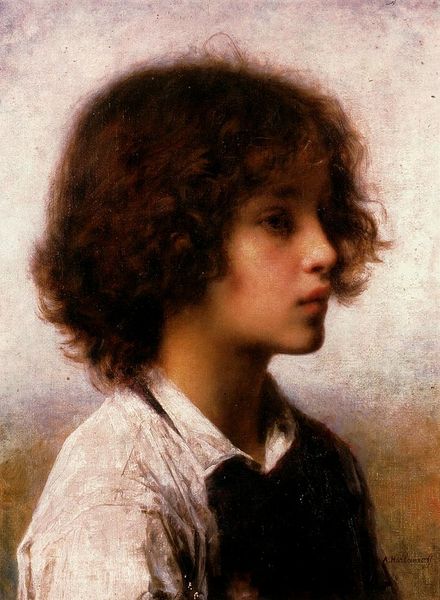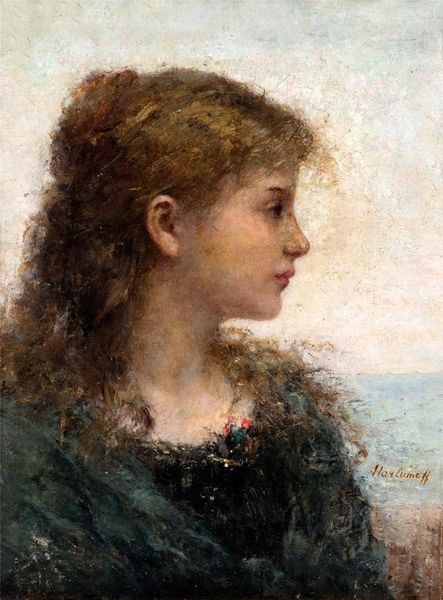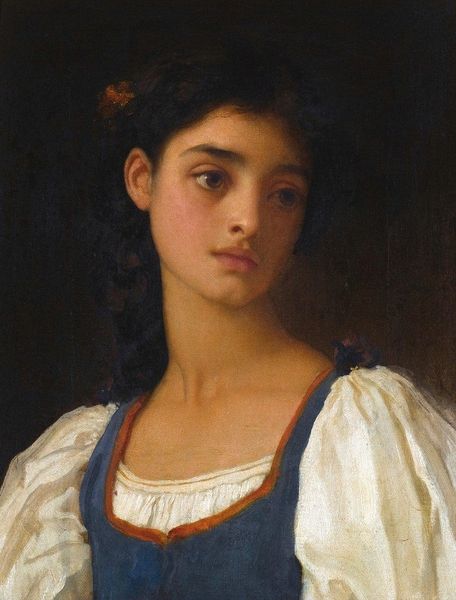
painting, oil-paint
#
portrait
#
painting
#
oil-paint
#
figuration
#
romanticism
#
genre-painting
#
realism
Copyright: Public domain
Curator: Alexei Harlamoff's painting, “A Neapolitan Girl," draws the eye with its soft brushwork and charming subject. Editor: My immediate impression is one of sweetness, a lighthearted moment captured on canvas, almost like a fleeting smile. It feels romantic, with a touch of playful defiance. Curator: Right, Harlamoff specialized in these portraits of young women, often from humble backgrounds, imbuing them with a certain idealized beauty. He skillfully employs oil paints to depict the textures of her clothing and the light catching her face, demonstrating his technical skill. We can trace its techniques back to portraiture of the time in its romanticizing a subject through ideal portrayal of form. Editor: But isn’t there something slightly unsettling about this idealization? There's the question of who this image is really for. We need to consider the power dynamics inherent in the male gaze and its impact on the representation of young women, especially within a historical context rife with class disparities. Curator: Fair point. I see the brushstrokes and choices in materiality as intentional design elements contributing to the allure, considering the probable target of bourgeoise class and therefore consumption of artworks at the time. The luminosity achieved through careful layering and blending of pigments is key to the romantic realism characteristic of his style. And perhaps the commodification of her image is what provided income. Editor: It's a tension, isn't it? On the one hand, she's presented as an individual with agency, meeting our gaze directly. On the other, the title itself labels her generically – "A Neapolitan Girl" – almost erasing her individuality as the sitter and cementing the gaze back on the consumer. It also calls to attention to otherization and the painting's use as representation in a period rife with ethnic tensions. Curator: You've given me much to consider, viewing not just the artistry as inherent property of the canvas, but viewing also the economic background. This dialogue really helps bring together two readings to better examine the conditions under which works are created and circulated, moving beyond the aesthetics to reveal the embedded ideologies. Editor: Precisely. Art history benefits from a broader scope. Seeing beyond beauty enhances our understanding.
Comments
No comments
Be the first to comment and join the conversation on the ultimate creative platform.

